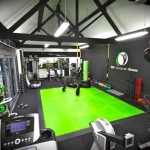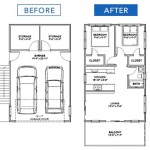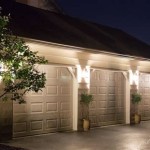Vent-Free Natural Gas Garage Heaters: The Perfect Choice for Outdoor Spaces
The ability to comfortably utilize outdoor spaces, particularly garages and workshops, during colder months significantly increases functionality and enjoyment of a property. Vent-free natural gas garage heaters offer an efficient and convenient solution for warming these areas, providing supplemental heat without the need for extensive ductwork or venting systems. Understanding the features, benefits, and safe operation of these heaters is crucial for making an informed decision about their suitability for specific outdoor or semi-outdoor applications.
Vent-free, also known as unvented, natural gas heaters operate by converting natural gas into heat through combustion. They are designed to burn gas very efficiently, producing minimal emissions. Because of this efficiency, the heat generated is released directly into the space, rather than being expelled through a vent or chimney. This characteristic differentiates them from vented heaters, which require an exhaust system to remove combustion byproducts. The absence of a vent makes them relatively easier and less expensive to install. However, this also introduces a set of specific safety considerations that must be carefully addressed.
The primary area of application for vent-free natural gas garage heaters is providing supplementary heating for spaces that are not continuously occupied or that require intermittent heating. Garages, workshops, patios, and occasionally sunrooms are common locations. These heaters are particularly useful in situations where running ductwork for a central heating system would be cost-prohibitive or impractical. The portability of some models also adds to their versatility, allowing them to be moved to different locations as needed. It is important to note, however, that local building codes and regulations often dictate where vent-free heaters can be legally and safely installed. Careful adherence to these regulations is paramount.
Natural gas is a widely available and generally affordable fuel source, making it an attractive option for heating. The cost of natural gas is typically lower than electricity or propane, potentially leading to long-term savings on heating bills. The efficient combustion of natural gas in vent-free heaters further contributes to energy savings. Modern vent-free heaters are also equipped with features such as electronic ignition and thermostatic controls, which enhance their energy efficiency by allowing users to precisely regulate the amount of heat produced. The combination of fuel cost and efficient operation makes vent-free natural gas heaters a potentially economical choice for supplemental heating. However, cost comparisons should always be made based on local fuel prices and heating needs.
Understanding the Key Advantages
Several advantages make vent-free natural gas garage heaters a viable option for specific applications. These include ease of installation, cost-effectiveness, and targeted heating capabilities.
Ease of Installation: One of the most significant advantages of vent-free heaters is the relative simplicity of their installation. Unlike vented heaters, they do not require the construction or modification of chimneys or venting systems. This significantly reduces the cost and complexity of the installation process. Typically, installation involves connecting the heater to a natural gas supply line and securing it to a wall or floor. The process can often be completed by a qualified technician in a matter of hours, minimizing disruption to the use of the space. For portable models, the installation process is even simpler, often only requiring a connection to a natural gas source via a flexible hose. This ease of installation makes vent-free heaters a particularly appealing option for homeowners or businesses seeking a quick and affordable heating solution.
Cost-Effectiveness: The initial cost of a vent-free natural gas heater is often lower than that of a vented heater, due in part to the reduced installation costs. Moreover, the operating costs can also be lower, depending on local fuel prices and usage patterns. Natural gas is generally a more affordable fuel source than electricity or propane, making it a potentially more economical choice for heating. The efficient combustion of natural gas in vent-free heaters further contributes to energy savings. By delivering heat directly into the space without the losses associated with venting, vent-free heaters can provide more heat per unit of fuel consumed. This can translate into significant savings over the long term, particularly for spaces that are only heated intermittently. However, it’s crucial to perform a thorough cost analysis, considering fuel prices, heating requirements, and the efficiency ratings of different heater models, to determine the most cost-effective solution for a specific situation.
Targeted Heating: Vent-free natural gas heaters provide targeted heating, allowing users to warm specific areas without heating the entire building. This is particularly useful for garages, workshops, or patios where only a portion of the space needs to be heated. By focusing the heat on the areas where it is needed most, users can avoid wasting energy on heating unoccupied or less-used portions of the space. This targeted heating capability can also improve comfort by providing warmth directly to the areas where people are working or relaxing. Some models also feature adjustable heat settings, allowing users to further customize the amount of heat produced to match their specific needs. The ability to precisely control the heat output and focus it on specific areas makes vent-free heaters a versatile and efficient solution for supplemental heating.
Safety Considerations and Operational Guidelines
Despite their advantages, vent-free natural gas heaters require careful attention to safety. Due to the absence of a venting system, these heaters release all combustion byproducts directly into the heated space. While modern vent-free heaters are designed to burn gas very efficiently, producing minimal emissions, it is crucial to ensure adequate ventilation and adhere to all safety guidelines to prevent the buildup of harmful gases, such as carbon monoxide.
Carbon Monoxide Safety: Carbon monoxide (CO) is a colorless, odorless, and poisonous gas produced by the incomplete combustion of fuels, including natural gas. Because vent-free heaters release combustion byproducts directly into the space, there is a risk of CO buildup if the heater is not properly maintained or if adequate ventilation is not provided. To mitigate this risk, it is essential to install a CO detector in the vicinity of the heater and to regularly test the detector to ensure it is functioning properly. Additionally, it is crucial to follow the manufacturer's instructions for proper operation and maintenance of the heater. This includes regularly inspecting the burner for dirt or debris, ensuring proper gas pressure, and not modifying the heater in any way. Proper ventilation is also critical. Even with an efficient heater, a small amount of CO will be produced, and adequate ventilation is necessary to prevent it from accumulating to dangerous levels. This often involves opening a window or door slightly to allow fresh air to circulate. The frequency and duration of ventilation will depend on the size of the space, the size of the heater, and the level of activity within the space. It's also vital to be aware of the symptoms of CO poisoning, which can include headache, dizziness, nausea, and confusion. If anyone experiences these symptoms, it's crucial to immediately evacuate the area and seek medical attention.
Ventilation Requirements: Proper ventilation is paramount for the safe operation of vent-free natural gas heaters. These heaters consume oxygen and release combustion byproducts, including carbon dioxide and water vapor, into the air. Inadequate ventilation can lead to oxygen depletion, increased humidity, and the buildup of harmful gases. To ensure adequate ventilation, it is generally recommended to provide a minimum amount of fresh air into the space while the heater is in operation. This can be achieved by opening a window or door slightly or by installing a ventilation system. The specific ventilation requirements will depend on the size of the space, the size of the heater, and the number of occupants. It is essential to consult the manufacturer's instructions and local building codes to determine the appropriate ventilation requirements for a specific installation. Additionally, it is important to avoid using vent-free heaters in small, enclosed spaces with poor ventilation, such as bathrooms or bedrooms. These spaces are more prone to oxygen depletion and the buildup of harmful gases. Regularly monitoring the air quality and ensuring adequate ventilation are crucial for maintaining a safe and healthy environment when using vent-free natural gas heaters.
Local Building Codes and Regulations: The installation and use of vent-free natural gas heaters are often subject to local building codes and regulations. These codes are designed to ensure the safe operation of these heaters and to prevent potential hazards. Before installing a vent-free heater, it is essential to check with the local building department to determine the applicable codes and regulations. These codes may specify restrictions on the size and type of heater that can be used, the required ventilation, and the location of the heater within the space. Some jurisdictions may even prohibit the use of vent-free heaters altogether. Failure to comply with local building codes can result in fines, penalties, and the removal of the heater. Moreover, it can also compromise the safety of the occupants and increase the risk of fire or carbon monoxide poisoning. Therefore, it is crucial to obtain the necessary permits and inspections before installing a vent-free heater and to ensure that the installation complies with all applicable codes and regulations. Consulting with a qualified HVAC technician can also help ensure that the heater is installed safely and in compliance with local requirements. Regular inspections and maintenance are also necessary to ensure the heater continues to operate safely and efficiently over time.
Factors to Consider When Choosing a Vent-Free Heater
Selecting the right vent-free natural gas heater for a specific application requires careful consideration of several factors, including the size of the space to be heated, the desired heat output, the heater's features and safety certifications, and the local building codes and regulations.
Space Size and Heat Output: The size of the space to be heated is a primary factor in determining the appropriate heat output for a vent-free heater. The heat output of a heater is typically measured in British thermal units per hour (BTU/hr). A heater with a higher BTU/hr output will be able to heat a larger space more quickly and effectively. To determine the appropriate heat output for a specific space, it is necessary to calculate the square footage or cubic footage of the space. A general guideline is that 30 to 40 BTU/hr are required per square foot of space in colder climates, while 20 to 30 BTU/hr may be sufficient in milder climates. However, this is just a general guideline, and the actual heat output required may vary depending on factors such as the insulation of the space, the number of windows and doors, and the desired temperature. It is also important to consider the potential for future expansion of the space. If there is a possibility that the space will be expanded in the future, it may be wise to choose a heater with a slightly higher BTU/hr output to accommodate the increased space. Choosing a heater with too low of a BTU output will result in insufficient heating and discomfort, while choosing a heater with too high of a BTU output can lead to excessive energy consumption and potentially unsafe conditions. Consulting with a qualified HVAC technician can help determine the appropriate heat output for a specific space and application.
Features and Safety Certifications: Vent-free natural gas heaters are available with a variety of features and safety certifications. Some of the common features include electronic ignition, thermostatic controls, oxygen depletion sensors (ODS), and tip-over shut-off switches. Electronic ignition eliminates the need for a pilot light, which can save energy and reduce the risk of gas leaks. Thermostatic controls allow users to precisely regulate the amount of heat produced, which can improve comfort and energy efficiency. Oxygen depletion sensors (ODS) automatically shut off the heater if the oxygen level in the space drops below a safe level, which can prevent carbon monoxide poisoning. Tip-over shut-off switches automatically shut off the heater if it is accidentally knocked over, which can prevent fires. In addition to these features, it is also important to look for safety certifications from reputable organizations such as UL (Underwriters Laboratories) or CSA (Canadian Standards Association). These certifications indicate that the heater has been tested and meets certain safety standards. Choosing a heater with these features and safety certifications can provide added peace of mind and ensure the safe operation of the heater. It is important to read the product specifications and safety information carefully before purchasing a vent-free heater to ensure that it meets the specific needs and requirements of the application.

Best Garage Heaters For Your Home Gym 2024 Reviews

Dyna Glo 10000 Btu Wall Mount Indoor Natural Gas Or Liquid Propane Vent Free Convection Heater In The Space Heaters Department At Com

Dyna Glo 30000 Btu Wall Mount Indoor Natural Gas Or Liquid Propane Vent Free Infrared Heater In The Space Heaters Department At Com

Dyna Glo 30 000 Btu Blue Flame Vent Free Thermostatic Garage Heater Com

The Best Gas Garage Heaters To Keep You Warm In Chilly Months

The 2 Best Outdoor Patio Heaters Of 2024 Reviews By Wirecutter

Testing The Best Propane Heaters Of 2024 Reviewed By Bob Vila

Dyna Glo 18000 Btu Wall Mount Indoor Natural Gas Vent Free Radiant Heater In The Space Heaters Department At Com

Calcana Infrared Patio Heaters

Outdoor Heaters Electric Vs Natural Gas Propane Sylvane
Related Posts








